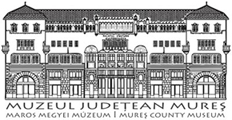Marisia - Maros Megyei Múzeum Évkönyve 32/2. (2012)
Articles
210 К. A. Baráth identified but considering the wall painting’s formal components and its prominent quality it must be counted as an elemental piece of the European art in the first half of the 14th century (Prokopp 2010, 265). The location of the mural in the church betokens a cult image (Prokopp 2010, 267). Yet, the question remains: how is it possible that a ‘Mother of God’ cult image shows occidental characteristics such as atypical costume accessory of the Cuman ethnic group? We cannot categorically refuse the conclusion of Hatházi but the fresco discovered in the Parish Church in Pest contravenes with his theory and requires the revision and reinterpretation of this type of cloak jewel, maybe by taking into consideration also the western European - mainly Italian - analogies. Finally, the mural paintings located on the southern pillar of the triumphal arch’s western side from the Roman Catholic Church in Tornaszentandrás should be mentioned (Pi. 1/8). The mural illustrates the ‘Discovery the True Cross’ and it was dated to the beginning of the 15th century (Marosi 1987,605). The figures of Saint Helena and Saint Stephan on her right side show significant details. The wings of the cloak of both figures are held together by two disc shaped plates depicted tightly beside each other. Although there is no attaching element between them, the plates assort with each other - unlike the miniature of the Hungarian Illuminate Chronicle mentioned by Hatházi - and it is feasible that the two ornamental accessories were attached by something that remained unpainted. If Hatházi saw an example in the miniature of Vérbulcsú, the wall painting of Tornaszentandrás is much more relevant but at least equivalent with it. On Hatházi’s opinion this accessory type went out of fashion at the end of the 14th century and he presumed a connection between the assimilation process of Cumans and the vanishing of the jewel type (Hatházi 2004, 145). It is true though that in the archaeological material from the 15th century there are no examples of this type and also most of the decorating embossings belongs to the 14th century (Hatházi 2004,143-145); and although the absence of the attaching element can refer to a simple paired shoulder adornment as well, the illustration in Tornaszentandrás also can cast doubt on the hypothesis of the observed jewel going out of fashion completely. REFERENCES Marosi 1987 Dávid 1981 Hatházi 1985 Hatházi 1988 Hatházi 2004 Horváth 1977 Jékely-Lángi 2009 Kovács 1973 Kovács 1998 Lángi-Mihály 2002 Lantos 2009 Dávid, L., Nagygalambfalva, Ars Hungarica, 195-203. Hatházi, G„ A perkátai kun szállástemető, MFMÉ, 1984-1985, 2, 651-674. Hatházi, G„ 14. századi ruhakorongpár Sárosdról és viselettörténeti kapcsolatai, ArchÉrt, 114,1987-1988,106-120. Hatházi, G., A kunok régészeti emlékei a Kelet-Dunántúlon, ОН, V. Horváth, E, Csengele középkori temploma, MFMÉ, 1976-1977,1, 91-126. Jékely, Zs.-Lángi, J., Falfestészeti emlékek a középkori Magyarország északkeleti megyéiből, Teleki László Alapítvány, Budapest. Kovács, B., Nagytálya középkori templomának feltárása, EMÉ, X, 119-158. Kovács, É., Két 13. századi ékszerfajta Magyarországon, IN: Kovács, É., Species Modus Ordo, Szent István Társulat, Budapest, 213-235. Lángi, J.-Mihály, E, Erdélyi falképek és festett faberendezések, L, Állami Műemlékhelyreállítási és Restaurálási Központ. Budapest. Lantos, A., Középkori temető és temetőrészlet Homokmégy-Szentegyházparton, ArchÉrt, 134, 259-280. Marosi, E., Magyarországi művészet 1300-1470 körül, Akadémiai Kiadó, Budapest.
